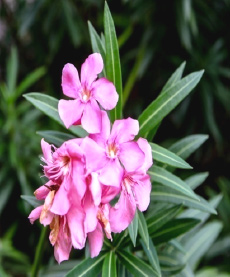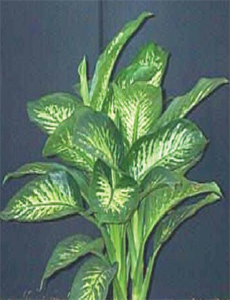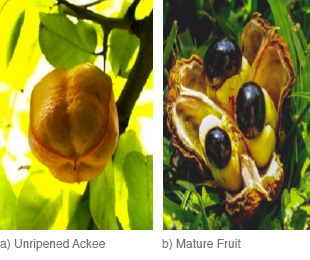Poison Garden
In just your average household garden there lurks many dangers; many poisonings may occur through indiscriminate use of agrochemicals such as; pesticides, weedicides, fungicides and molluscicides, not to mention some ornamental plants which are considered to be poisonous. Parents and guardians are advised to always supervise young children when they are allowed to play outdoors.
Agrochemical Safety Information
- Newborns, young children, the elderly, pregnant women and those with many allergies or medical problems are at higher risk for developing problems following exposure to these chemicals.
- Do not over-use these chemicals, more is not necessarily better.
- Decrease your exposure risk as much as possible because a larger exposure will produce more symptoms.
- Read the product label thoroughly before use and follow all recommended safety precautions during and after use.
- Wear gloves and protective clothing (face mask, safety glasses, caps, long sleeve shirts and long pants) when applying such chemicals.
- Avoid breathing pesticide fumes or vapours. Do not use agrochemicals on windy days where the chemicals can blow back and cause skin exposure or inhalation.
- Wash hands or shower well immediately after applying agricultural chemicals.
- Never put agricultural chemicals into any other container but the original container! Too many life-threatening poisonings have been caused by an accidental ingestion of such a put into an unlabelled food or beverage container. Treatment has been delayed and complicated because there was no label to identify the poison.
- Leather boots, shoes, belts, or jackets splashed with these chemicals cannot be decontaminated and must be discarded.
- Do not mix different agrochemicals to create your own blend. Agricultural chemicals should be used only as indicated by the directions.
- Keep children and animals off treated areas until the areas are dry for 24 hours.
- Concentrated chemicals are more likely to cause problems than ready-to-use products. Always follow the directions and dilute concentrates appropriately before use.
- Baits; snail baits, ant bait and rat bait are prepared to attract; keep them away from curious children and pets.
- If you are accidentally exposed, do not panic; keep an eye out for any symptoms that may be related to pesticide exposure such as watering of eyes, excessive drooling and upset stomachs to name a few. Call the National Ambulance services, if you think that the exposure may be harmful.
Professional Pesticide Extermination
- Legitimate professional extermination companies will discuss what chemicals they plan to use on your property, the active ingredients and concentrations.
- After indoor pesticide extermination, high-risk people (infants, elderly, pregnant, sickly) should stay away for 12-24 hours to be safe. Low-risk people should stay out for a minimum of 4-6 hours.
- If a strong pesticide smell is still present on your return home, ventilate by opening windows and turning on fans. Stay out of the house until the smell is gone. If the smell persists, contact the pesticide company.
- All food, including pet food and the water bowl, should be wrapped or stored away from sprayed areas.
- Children's toys, clothing and bedding should be covered or stored away from sprayed areas.
- Wash all tables, counter tops and linoleum/tile surfaces after pesticide application.
- Vacuum carpets well and mop floors before allowing babies and children to crawl and play on these surfaces.
- Keep animals out of homes during extermination and away from sprayed areas until surfaces are dry and odours are negligible.
POISONOUS PLANTS
Many varieties of ornamental plants exhibit toxic effects, persons most at risk are children who often wander around the garden enticed by the colours and fragrances of flowers and berries and animals that tend to gnaw on items around the home.
Some things to note:
- Eating a small amount of a plant may not always be a problem but large or repeated doses may be harmful.
- Commons symptoms of plant poisonings include nausea, vomiting, abdominal cramps and diarrhoea.
- Some plants may cause skin rashes and swelling if touched, irritation to the tongue or mouth area if chewed, should swelling occur in the mouth area, seek immediate medical assistance.
- Some plants cause areas of the skin to be sensitive to sunlight, called photosensitisation.
- Heating and cooking does not destroy the toxins in the plants.
- AVOID burning plants that are known to be poisonous; this may cause the harmful substances to become airborne.
- If seeking medical attention, it may be helpful to carry a portion of the plant (seeds, leaves, fruits et c) to assist in the medical personnel in knowing what toxin is the culprit.
Some Common poisonous plants

Oleander
SPECIES NAME: Nerium OleanderUSES: Mainly ornamental but used in some herbal medicines as a cardiotonic. All parts of the plant are harmful.
MECHANISM OF ACTION: The plant contains cardiac glycosides which causes interference in the electrical conduction of the heart muscle resulting in irregular heartbeats.
SYMPTOMS: Gastrointestinal upset, visual disturbances, Drowsiness, Weakness, Confusion, Delirium, Tachypnea (rapid breathing), Heart palpitations.
TREATMENTS: wash hands or irrigate eyes to properly decontaminate, if ingested, watch for any of the above symptoms and get to a health facility if they occur.

"Dumb Cane"
SPECIES NAME: Dieffenbachia amoena
USES: Mainly an ornamental plant. All parts of the plant are harmful.
MECHANISM OF ACTION: The plant contains needle-shaped crystals of calcium oxalate
SYMPTOMS: Symptoms may occur following skin and eye contact or ingestion of the fresh or dried plant. In the case of ingestion, irritation and swelling of the mouth, lips and tongue may occur; in severe cases this may lead to respiratory distress. Contact with eyes may cause excessive tear formation and may also lead to corneal scarring.
TREATMENTS: Wash hands or irrigate eyes to properly decontaminate, if ingested, watch for any of the above symptoms and get to a health facility if they occur.

Ackee
SPECIES NAME: Blighia sapida
USES: The white to yellow flesh is used in Jamaican cuisines, the most popular preparation being “ackee and saltfish.” MECHANISM OF ACTION: When unripened, the ackee contains a higher concentration of the toxin, Hypoglycin. It is advisable to only consume the ripened fruit and the white to yellow flesh. Hypoglycin interacts with other molecules in the body and consequently decreases the amount of glucose stores, leading to low blood sugar or hypoglycemia.
SYMPTOMS: Abdominal discomfort, sudden onset vomiting, dehydration, seizures, coma and death may also arise in worst case scenarios.
TREATMENTS: If any of these symptoms arise after the consumption of ackee, please seek prompt medical care.
Castor Bean
SPECIES NAME: Ricinus communis
USES: Castor oil which has many uses can be extracted from this plant through cold pressing. The toxicity of the castor bean plant can be attributed to the presence of ricin in the seeds. The castor oil extracted from this plant does not contain any ricin.
MECHANISM OF ACTION: The primary route of exposure is the ingestion of seeds with broken seed coats. Ricin inactivates vital molecules in the body which inhibits the production of vital proteins in the body, ultimately leading to cell death.
SYMPTOMS: Mild toxicity: Nausea, vomiting, diarrhea. Moderate toxicity: Abdominal pain, dehydration, melena, elevated liver enzymes. Severe toxicity: CNS depression, Liver failure, Kidney failure, coma, death.
TREATMENT: If any seeds or parts of the plant were ingested, please seek immediate medical care.
Jumbie Bead
SPECIES NAME: Abrus precatorius
USES: The beautiful red and black beads are used for crafts and jewellery making.
MECHANISM OF ACTION: The primary route of exposure is the ingestion of seeds with broken seed coats. The toxic component of the seed is a protein called abrin. It is present in all parts of the plant with the highest concentration being in the seeds. Like ricin, it disrupts the proper functioning of essential activities in the body.
SYMPTOMS: Mild toxicity: Nausea, vomiting, diarrhea. Moderate toxicity: Abdominal pain, dehydration, melena, elevated liver enzymes. Severe toxicity: CNS depression, Liver failure, Kidney failure, coma, death.
TREATMENT: If any seeds or parts of the plant were ingested, please seek immediate medical care.
Datur
SPECIES NAME: Datura stramonium
USES: The plant is used mainly for ornamental purposes.
MECHANISM OF ACTION: All parts of the plant contains the toxins; hyoscyamine, hyoscine and atropine. These alkaloids are known anticholinergic substances, which blocks the neurotransmitter, acetylcholine at certain receptor sites in the nervous system.
SYMPTOMS: Exposure to this plant may be due to persons ingesting parts of the fresh or dried plant, or through herbal tea infusions or through inhalation of smoke from burning plant material. Symptoms of toxicity range from dry mouth, flushed, dry skin, mydriasis, blurred vision, elevated body temperature and irregular heartbeats to delirium, CNS depression, seizures, and circulatory collapse.
TREATMENT: It is advisable to seek prompt medical attention in the case of ingestion of such plant material.

















